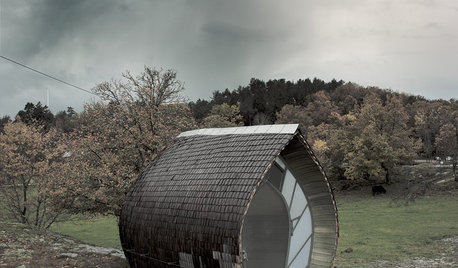Rare sighting in Lakeland.
mboston_gw
15 years ago
Related Stories

FUN HOUZZThe Unicorn in the Bathtub — and Other Mind-Blowing Sights
Fantasy and reality meet head-on in photos of costume fans in their own homes
Full Story
HOUZZ TOURSRare Modernist Home Uncovered in Palm Springs
A custom home by modernist William Krisel gets restored and updated
Full Story
KITCHEN DESIGNKitchen Details: Out-of-Sight Paper Towel Holder
See how some homeowners are clearing the counter of clutter while keeping this necessity close at hand
Full Story
HOUZZ TOURSHouzz Tour: A Rare Tiny-Home Specimen in Sweden
With a reptilian skin and unusual architecture, this small home focuses on nature and simple living
Full Story
LANDSCAPE DESIGNDiscover an Intimate Garden Nestled on a Manhattan Rooftop
As rare as a taxi on a rainy day, this New York City escape balances privacy with a gentle embrace of city sights
Full Story
ARCHITECTUREBack to the Futuro: Tour a Lovingly Restored ‘Spaceship’ Home
Travel back to the ’60s Space Age with a rare glimpse inside an original House of the Future
Full Story
VICTORIAN DESIGNHouzz Tour: San Francisco’s Haas-Lilienthal House
Get a rare behind-the-scenes glimpse of this storied Victorian mansion from its decade-long caretaker
Full Story
MOST POPULAR5 Ways to Hide That Big Air Conditioner in Your Yard
Don’t sweat that boxy A/C unit. Here’s how to place it out of sight and out of mind
Full Story
ARCHITECTURERoots of Style: Queen Anne Homes Present Regal Details
Complex facades with bay windows, multiple shingle patterns and even towers make these Victorian-era homes a sight to behold
Full Story
PHOTO FLIP71 Dream Bathtub Views
Soak in the sights with this collection of tantalizing tubs and inspiring vistas
Full StorySponsored
Columbus Design-Build, Kitchen & Bath Remodeling, Historic Renovations
More Discussions








SaintPFLA
SaintPFLA
Related Professionals
Allentown Landscape Architects & Landscape Designers · Finneytown Landscape Architects & Landscape Designers · Burlington Landscape Contractors · Norwood Landscape Contractors · Broomfield Landscape Contractors · Framingham Landscape Contractors · Lewisville Landscape Contractors · Mesa Landscape Contractors · Panama City Beach Landscape Contractors · Paterson Landscape Contractors · Wethersfield Landscape Contractors · Glendale Decks, Patios & Outdoor Enclosures · Grand Rapids Decks, Patios & Outdoor Enclosures · Liberty Decks, Patios & Outdoor Enclosures · Salem Decks, Patios & Outdoor Enclosuresmanature
mboston_gwOriginal Author
manature
mboston_gwOriginal Author
mboston_gwOriginal Author
manature
shellfreak
coffeemom
mboston_gwOriginal Author
manature
solstice98
mboston_gwOriginal Author
manature
manature
mboston_gwOriginal Author
manature